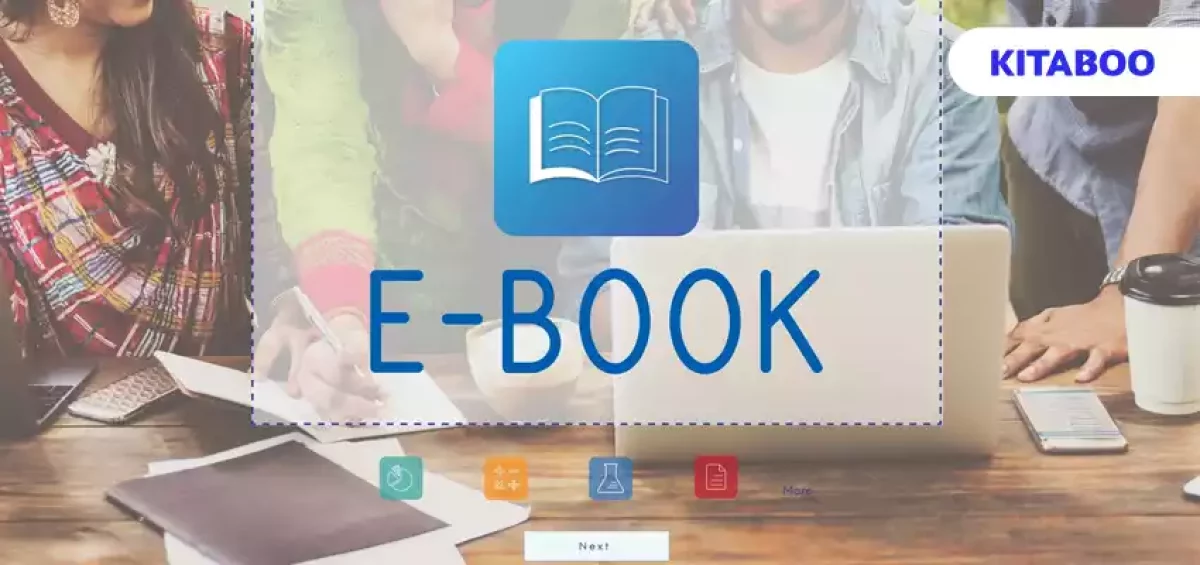The digital age has transformed industries, emphasizing the need for creators and publishers to master the creation of online documents. Ebooks, among other digital documents, have become indispensable tools in various fields such as education, marketing, authoring, and business. As a content creator or publisher, adapting to this shift is crucial.
When it comes to creating compelling ebooks, it takes more than just converting traditional content into a digital format. This process involves understanding the dynamics of online engagement, user experience, and multimedia integration. The key here is to not only make information accessible but also to make it engaging and memorable.
Read on as we take you through how to create ebooks that stand out in the digital era.
Let’s start!
Table of Contents:
I. 12 Significant Ways to Make Your eBook Writing and Publishing Creative and Seamless
- Step 1: Define Your Audience and Purpose
- Step 2: Choose the Best eBook Software
- Step 3: Use an Outline
- Step 4: Create Compelling Visuals
- Step 5: Integrate Multimedia Elements
- Step 6: Design a Compelling Cover
- Step 7: Seek Relevant and Honest Feedback
- Step 8: Proofread and Edit
- Step 9: Utilize Social Media for Promotion
- Step 10: Offer a Unique Selling Proposition (USP)
- Step 11: Optimize for SEO
- Step 12: Engage with Your Audience
II. Conclusion
12 Significant Ways to Make Your eBook Writing and Publishing Creative and Seamless
Here are 12 critical suggestions that will help you create eBooks seamlessly and effectively in 2024:
Step 1: Define Your Audience and Purpose
Defining your audience and purpose is a critical step and it is important to consider the demographics, interests, and preferences of the audience you want to reach. Research existing eBooks in your niche to understand the audience’s needs and preferences. Here are some tips:
- Always analyze reader reviews and feedback to identify weaknesses and stick to what you want to achieve—whether it’s educating, entertaining, solving a problem, or providing valuable insights.
- Always establish specific and measurable objectives for your eBook and address the readers’ pain points, answer their questions, and provide solutions.
- Determine the tone and writing style to match your readers’ preferences, and simply select topics that are relevant and valuable to your audience.
Step 2: Choose the Best eBook Software
Choosing the best eBook software is a crucial decision that can significantly impact the success of your eBook creation process. Start by considering the specific needs of your project, looking for a user-friendly interface, and checking its compatibility with various devices and formats. A few other tips and techniques that can help you are:
- Opt for digital textbook platforms with digital rights management (DRM) protection, like KITABOO, a leading digital textbook platform that safeguards your content against piracy and unauthorized distribution.
- Moving to a cost-effective solution is vital, as is exploring reviews and testimonials to understand user experiences and identify potential challenges.
- Look for software that provides comprehensive eBook creation, formatting, and publishing tools
- Always trust the best eBook software, which allows you to add multimedia elements, customize layouts, and streamline the publication process.
Step 3: Use an Outline
Using an outline can offer a structured roadmap for your content. Identify key themes, chapters, or sections you want to include in your eBook, outline the main points, subtopics, or key messages, and sequence them effectively.
An outline helps prevent information overload and keeps your content focused. It further enhances the visual overview of your eBook’s structure and maintains consistency throughout the eBook.
Step 4: Create Compelling Visuals
Creating compelling visuals is a pivotal aspect, and you can start by selecting high-quality images, graphics, or illustrations that are relevant to the concepts you’re conveying. Integrate visuals strategically and always choose a consistent design style, color scheme, and font to maintain visual coherence throughout the eBook.
Deploy infographics, charts, and diagrams that can be powerful tools to convey complex information, and pay attention to the layout and spacing to create eBooks with a visually balanced presentation.
Step 5: Integrate Multimedia Elements
Integrating multimedia elements is an effective way to elevate your eBook online using in-depth explanations, videos, interviews, audio clips, demonstrations, or interactive features that align with your eBook’s theme. Add value rather than maintain a balance between text and multimedia, ensuring a cohesive and harmonious presentation.
In this regard, you can partner with KITABOO, a unique digital textbook platform, to enhance your ebook’s multimedia experience. The platform offers user-friendly tools that facilitate seamless integration of various multimedia elements, which enhances the overall engagement of your digital content.
Step 6: Design a Compelling Cover
Designing a compelling cover in the form of a visually striking image or illustration will attract your readers. Consider appropriate color schemes, typography, and layout, and incorporate clear and concise text elements.
Make sure you experiment with different designs and seek feedback from stakeholders to refine your cover until it entices individuals to explore its contents.
Step 7: Seek Relevant and Honest Feedback
Seeking relevant and honest feedback can enhance the quality of your eBook. Start by identifying individuals who represent your target audience, sharing your eBook with them, and encouraging honest feedback on various aspects.
You can also join social media groups, online writing communities, or reader groups where you can receive diverse perspectives. Don’t get too hassled by constructive or negative feedback, as it will help you work on the areas for improvement and employ refinements to ensure your eBook meets the expectations of your intended readership.
Step 8: Proofread and Edit
Proofreading and editing give you a fresh perspective, and you can sort out grammatical errors, spelling mistakes, and punctuation issues. Always recheck and edit the sentence structure to ensure clarity and coherence within the content.
Utilize grammar-checking tools and a professional editor for a comprehensive review. You can further refine the language, improve text flow, and reassess the writing style, tone, and voice throughout the eBook.
Step 9: Utilize Social Media for Promotion
Social media is a great tool for promotion; however, before you create an official account on social media platforms for your eBook, you must understand that maintaining a consistent and engaging online presence is imperative.
You can share teaser content, use popular hashtags, and consistently engage with your audience by responding to comments and encouraging a sense of community. By generating a buzz and building awareness using social media platforms, you can effectively connect with potential readers.
Guide:
How to Build an eBook Store
Step 10: Offer a Unique Selling Proposition (USP)
A well-thought-out Unique Selling Proposition (USP) can help distinguish your work and attract the attention of your target audience. Identify the unique qualities of your eBook, include a unique perspective, and then circulate your USP in your promotional materials.
Highlight the value it brings to readers and emphasize how your content is capable enough to address specific needs and solve problems. You can also deploy your USP into your book cover, promotional campaigns, and branding messages.
Step 11: Optimize for SEO
Optimizing your eBook for SEO enhances its discoverability. You simply need to identify relevant terms and phrases, incorporate these keywords into your eBook title, description, and throughout the content, and communicate the value of your eBook.
Optimize your metadata, tags, URLs, and headers, and regularly update your content to stay current to increase the likelihood of your eBook ranking higher in search engine results.
Step 12: Engage with Your Audience
Engaging with your audience will help you develop meaningful connections and build a strong online presence through social media platforms. Actively participate in conversations, respond to comments, and offer an authentic brand voice that enhances the relatability of your content.
Consider hosting live Q&A sessions, webinars, or book launches and showcasing them on your platforms to acknowledge your audience. Respond promptly to emails and messages, and strengthen your author-reader relationship.
Conclusion
It is critical to embrace effective eBook software that offers new technologies, is attuned to industry trends, and understands the evolving preferences of readers.
Make the most of the crucial components of such resources so that you can create eBooks that inspire, inform, entertain, educate, and leave a lasting impression on your readers.
KITABOO is one of the key digital textbook platforms that combines creativity with technical know-how and ensures that your creative eBooks meet and exceed the expectations of our audience.
Discover How An Ebook Conversion, Publishing & Distribution Platform Can Help You
Kitaboo is a cloud-based content platform to create-publish & securely distribute interactive mobile-ready ebooks.
You May Also Like
-
Top K–12 Online Education Platforms in 2024
Blog,Digital Publishing,eBook solution / January 31, 2024








